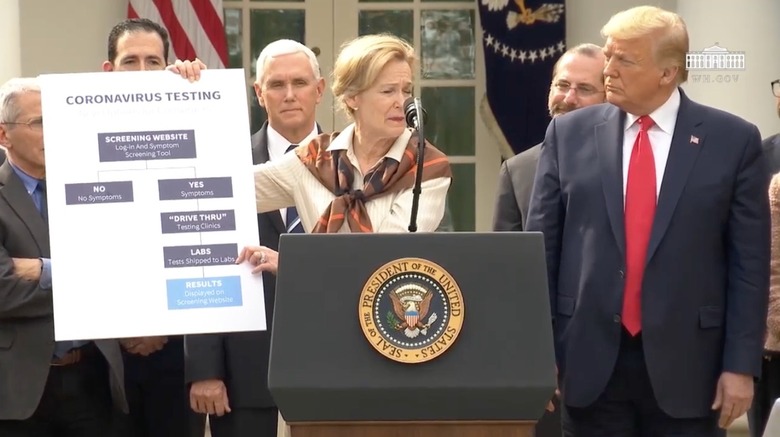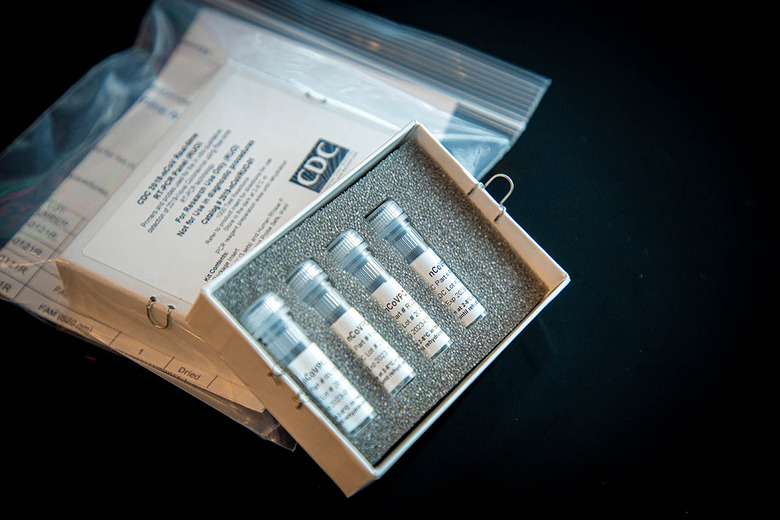COVID-19 National Emergency Official: Drive-Thru Coronavirus Testing Promised
The coronavirus situation has officially been declared a national emergency in the US, with President Trump promising widespread access to testing to arrest the spread of COVID-19. The announcement was made at the White House on Friday afternoon, and follows widespread criticism of the way the coronavirus outbreak has been handled compared to other countries.
"I am officially declaring a national emergency, two very big words" Trump said on the White House lawn, flanked by the Vice President and representatives from retailers and test-makers.
Declaring a national emergency unlocks access to widespread public funding, with Trump promising $50 billion that could be accessed as the healthcare situation evolves. It comes only two days after the Administration announced a travel band for much of mainland Europe, which will ban foreign nationals who have visited those countries from entering the US for the remainder of the month.
Broader testing for COVID-19 is finally in the pipeline
The challenge, however, has been accessing testing in any meaningful way. While countries like South Korea have been running tens of thousands of tests, including in drive-thru locations, the US has performed just a fraction of that number. Early test kits supplied by the US CDC were found to be faulty, delaying broader access. When the World Health Organization declared COVID-19 to be a global pandemic earlier this week, the WHO Director-General pointedly highlighted "alarming levels of inaction" as contributing to the uncontrolled spread of coronavirus.
The answer, Trump announced today, was a new website and drive-thru testing access in the US. A public-private partnership will see commercial testing companies like LabCorp, Quest Diagnostics, and Roche use their tests on samples taken at swab stations in mobile units in parking lots. Locations will be spread across Walmart, CVS, Target, and Walgreens.

That process will be triaged by the website, which will be created by Google. By Sunday evening, Vice President Mike Pence confirmed, the site will have specific guidance: people who suspect they might be infected with coronavirus will be asked to enter their symptoms, and then based on the criteria set down by the CDC and others it'll be indicated whether a test is appropriate or not. If it is, they'll be directed to the nearest testing location. The testing companies will be set up to deliver "results in the very near future," Pence suggested.
"We'll have the ability to do in the millions in very quick time," Trump said of test availability. Results could be delivered in 24-36 hours, the President suggested.
Update: Despite what President Trump and Vice President Pence may have suggested, it appears their timeline for the triage website is entirely inaccurate. According to Google, the site is only expected to cater to the Bay Area initially, with any expansion some ways off.

Student loans and gas prices get particular attention
In addition to coronavirus testing, the US government is also focusing on two other areas of potential pain: student loans and the cost of gas. For the former, all interest on student loans held by federal government agencies has been waived until further notice, Trump said.
As for gas prices, the strategy there is building up the US strategic reserve of crude oil. The Secretary of Energy, Trump said, has been instructed to purchase "large quantities" of crude oil to ensure that supplies will not run short at the pump.
Nursing homes on lockdown
One of the biggest disruptions is likely to be to nursing homes, where elderly and often sick people are at particular risk from COVID-19 or other conditions such as pneumonia. The Administration is giving instructions that nursing homes be put under quarantine, limiting access to any non-essential personnel, apart from in certain special situations like end-of-life.
What Trump isn't doing is taking responsibility for the way the outbreak in the US has been handled until now. Asked by reporters whether he accepts any blame, the President said "no, I don't take responsibility at all." Instead, he blamed the system on previous presidencies, and "rules, regulations, and specifications from a different time."
As of Thursday there have been more than 1,600 cases of coronavirus reported in the US, and 41 deaths. Experts, however, believe the numbers of actual infections to be significantly higher, something which broader testing will confirm.
